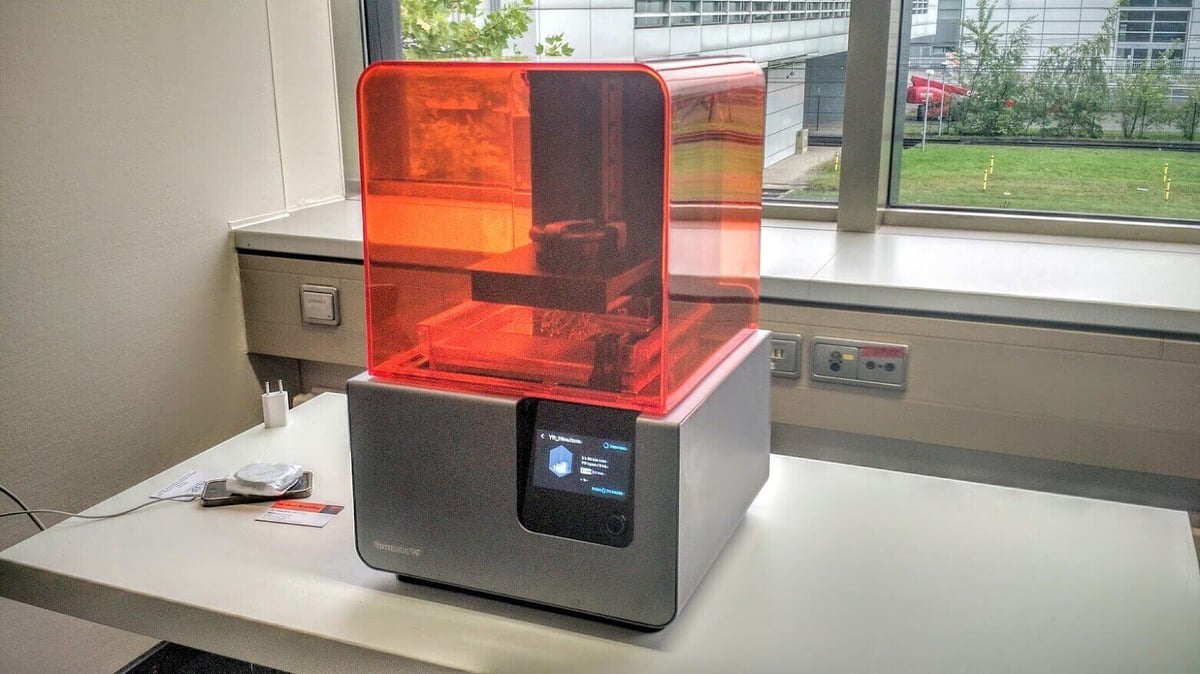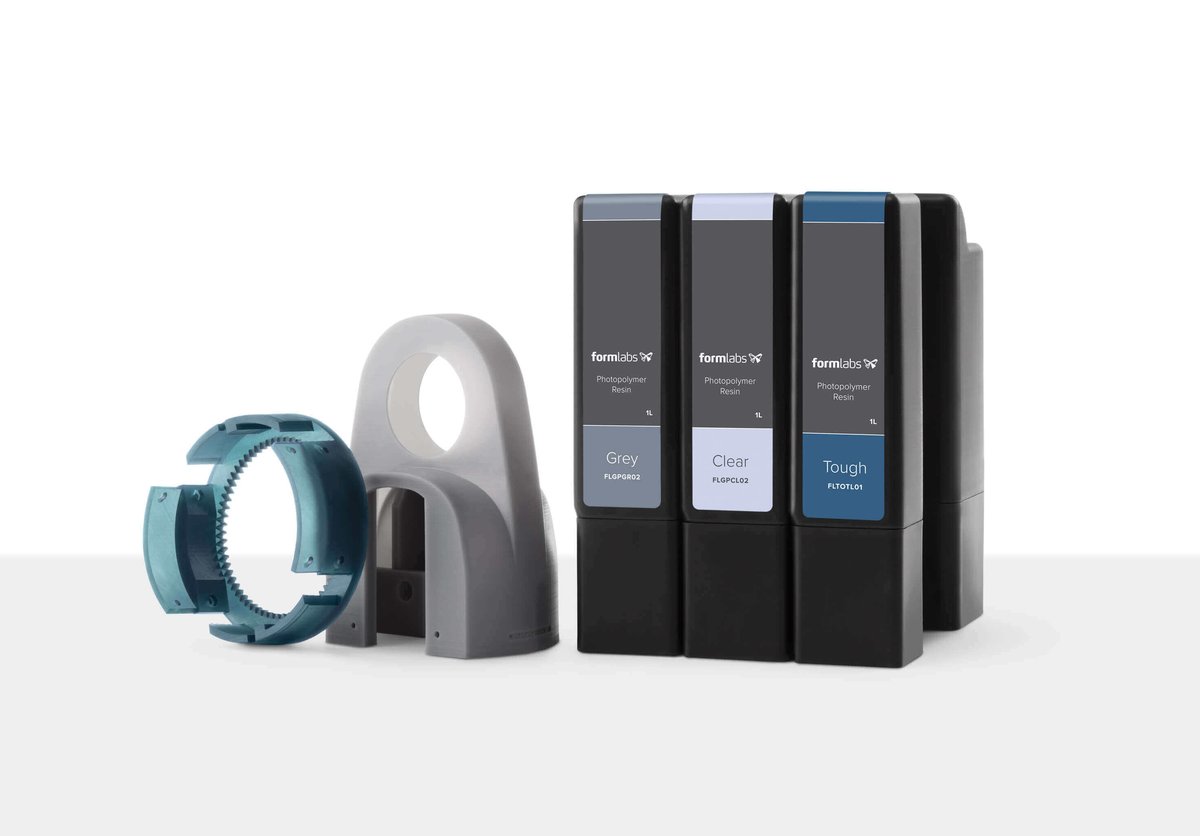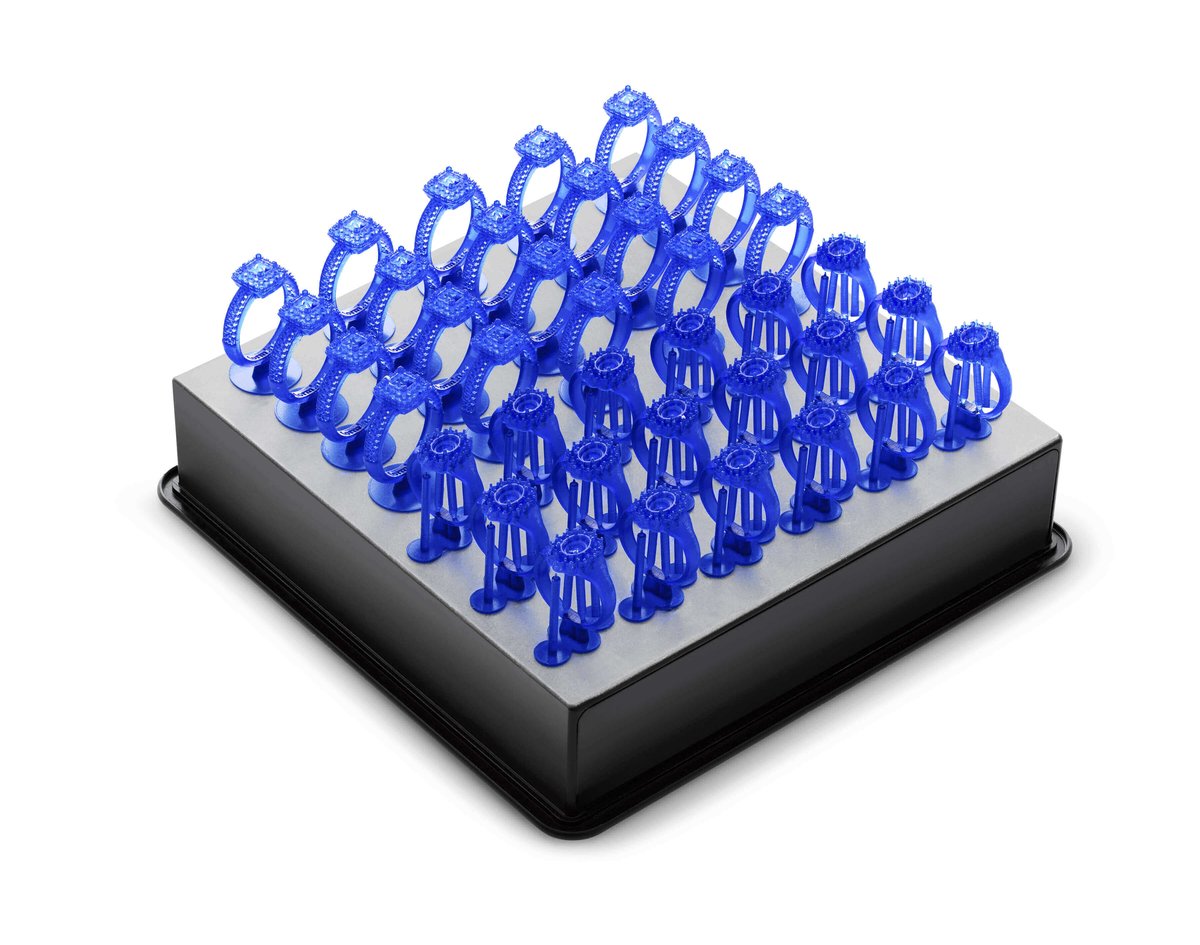With the launch of the Form 2, the new flagship 3D Printer from Formlabs, EU Lead Michael Sorkin spoke to ALL3DP about his plans for Europe.
Perhaps the most exciting development took place on the opening day, where Formlabs lifted the curtain on the Form 2 in Europe, an impressive new SLA machine that builds on the foundations of their Form 1 and Form 1+ 3D printers.
Our first impressions of the Form 2 are that it’s a large, beautifully designed, and fully featured desktop 3D printer. We eagerly look forward to testing out the claims of superior reliability at a later date.
Just prior to the launch, ALL3DP sat down with Formlabs’ newly-minted EU lead, Michael Sorkin, for a detailed discussion about his exciting plans for Formlabs in Europe. It’s a looooong interview, and we’ll be publishing the second part of the interview tomorrow.
Q: So thank you very much for agreeing to meet. First thing I wanted to ask was, so you’ve been in charge of Formlabs in the EU for the past 30 days?
That’s correct, yeah.
Q: So how would you say it’s going so far?
Formlabs Europe is operating from from the Berlin office. We’re very new in this city, the team is very international and very young, but very passionate about the company and about the product. When I came in, there was a very small office, just one room, but big goals and long-term strategies.
In the past 30 days, we’ve been busy working on the announcement of the Form 2. So we’ve been really focussed on planning for this year’s Euromold, and then planning the next steps post-launch.
Until now, what we have in Berlin, I would call it just a startup. But with my joining the company and the new strategy we have at Formlabs, we’re going to evolve into a full operational headquarters for Europe. We will still be in Berlin. We’re looking for a new office space. We’re looking for a bunch of new team members, in all kind of spheres like marketing, sales, practically all departments, and building a whole division for Europe. And we’re seeking new partners, too.
So, yeah, I think I’m doing quite well, and we’re very motivated and excited about the announcement this afternoon.
Q: Fantastic. And so, leading into the Form 2 announcement, what would you say are the key features?
What Formlabs has always been good at is not finding a niche, but an average scope of use for a mass market, but still providing the high quality on the verticals. For example, a car engineer can use our machines to produce prototypes, but they are also able to provide even the final products with our tough resin. Not very heavy industry machines, of course, but, for example, for scale model makers, they can make out of the tough resin a functional part by providing a very good price-performance ratio.
And the only things which really matter right now in the 3D printing industry are reliability and repeatability of the prints. The Form 1+ is a successful product, and is already delivering top-notch print quality. But, by looking at the whole market, we’re looking into how we can provide an even better reliability and raise the output quality in total.
So if an engineer is producing many, many parts which are similar to each other, we have to take care that each new part looks exactly the same as the last one. And that’s why we’re looking into this field by changing some parts in the new machine and implementing new technology like the peel mechanism, which provides the user with a much more stable environment inside the print build volume.
Besides the fact that the Form 2 has a 40 per cent bigger print volume, and we have a much more accurate and reliable print experience, there is a temperature-controlled resin tank, so we can really take care that the viscosity of the resin is constant all over the whole print. So, if the print job takes eight hours, the temperature inside the build volume, inside the resin, stays constant, which reduces the risk of warping or any deformation and print failures.
The other thing is, of course, that with the peel mechanism, we really take care that no debris or dust is left inside the resin, so the quality of the print and the structure can be really reproduced one-to-one, as it looks on the screen.
We have also improved the overall chassis. It’s completely covered, so no dust can get inside the machine, which improves the reliability of the machine in different environments. We can put the Form 2 in a classroom with a high volume of children and teachers, where the environment can be a bit chaotic. But it can also be used in a very, very quiet environment like a library because it’s much quieter than it was before.
By having a laser that’s 50 per cent stronger, we are able to provide bigger volume at the same speed while providing new quality with the peel mechanism. And the combination of that makes it even more easier for a user to have a faster print. We’ve also implemented a touch screen, which provides a better user experience. So the user interface was completely re-engineered. And we have new galvanometers inside which provide a more exact laser focus on the build platform.
And we have improved the whole software implementation, so we have software where you can operate and queue the prints remotely. So, for example, with Wi-Fi connecvity, which is also new in this machine, you can operate the Form 2 from another place and queue the prints, so you can manage and see what’s in the queue from another room or any other space.
Q: But what about the resin? How can you queue a job if the resin needs to be changed?
So the build platform and the resin tank is filled with resin automatically and the cartridge will always monitor the level of resin. If you run out of resin, it will indicate and you have to change the cartridge. You can change the cartridge, or you can fill it with a third-party resin because we’re still offering the ability to use other materials. But if you do that, we can’t guarantee that the quality will be the same as with our resins, and the settings have to be changed.
But, in general, by having the ability of just swapping out the cartridges without having to pour resin away improves the whole user experience in total. So together with the connectivity, the bigger print size, and the build volume, the Form 2 provides a stronger and more reliable experience for the user.
Q: Sounds great. Circling back to the 50 per cent stronger laser and the large build capacity. Does this result in increased resolution, or does the resolution of the prints stay the same?
The resolution of the prints is not only about the laser, it’s also about the settings in the PreForm software. So, right now, we have the same resolution as we have on the Form 1+, which is top-notch. But, by tuning the Form 2 PreForm software and by uploading the most recent software updates, it will become faster and more accurate.
Q: Okay. So the same resolution, but the job is turned around quicker and more efficiently.
Yeah, we have more ability with the 50 per cent stronger laser. First, we can research working with new materials, which we’re currently doing, and second, we can look at other vertical markets. So we can play around with this laser − you know, we have more flexibility than before.
Q: That’s pretty clever. The idea of speeding up production time is probably more important to many people than resolution… which brings me to the price. From the press release, if I read it correctly, the price is going up for your flagship product.
Well, it’s not really a price increase. You have to see − what we have with the Form 1+, it’s already a very, very affordable machine for the quality it delivers. We lowered the price of the Form 1+ by $400.00 because we want to make it even more affordable to other niches and target groups. And we slightly increased the price for the Form 2. But we added many, many more improvements and new parts in it.
Besides the cosmetic changes − like, say, a new build volume or a bigger plate − we’ve added new galvos, completely in-house designed and engineered, which are based on in-house research and development. So we put in the new galvos, and a new laser. We have a new peel mechanism. We have Wi-Fi connectivity and a touchscreen. And the price will be 3.299 euros.
Q: Okay. And you mentioned about aiming a product at the mass market, but then also targeting verticals. Who would you say would be your core audience or demographic for the Form 2?
And with the variety of materials they can offer to their clients, engineers and makers can now attempt more elaborate applications. We’re having medical research institutions working on prototypes and models. With the castable resin, we offer a lot to the jewelry market.
And, last but not least, which is very important for the US and Europe, is the educational market. The Form 1 and Form 1+ has been adopted by many, many universities in Europe and the US. And now, with the Form 2, we’re trying to offer a more complete, more easy-to-use solution that goes even further into schools and training colleges and provides the same experience there.
That’s the end of part 1. Tune in tomorrow for the concluding installment of our Euromold interview with Michael Sorkin, Formlabs EU Lead.
License: The text of "Interview with Formlabs EU Lead Michael Sorkin (Part 1)" by All3DP is licensed under a Creative Commons Attribution 4.0 International License.



